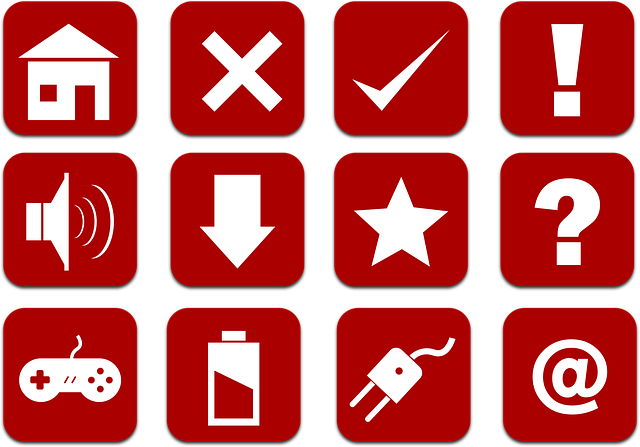How to Check Trading Volume of ETF: A Step-by-Step Practical Guide
Author: Jameson Richman Expert
Published On: 2025-10-23
Prepared by Jameson Richman and our team of experts with over a decade of experience in cryptocurrency and digital asset analysis. Learn more about us.
How to check trading volume of ETF is a common question for traders and investors who want to assess liquidity, execution risk, and price impact before buying or selling an exchange-traded fund. This article explains what ETF trading volume means, why it matters, where to find reliable volume data, step-by-step methods to check volume on popular platforms, how to interpret the numbers, advanced tools and APIs for automated checks, and practical examples to help you act with confidence.

Why ETF trading volume matters
Trading volume for an ETF represents the number of shares traded on the secondary market during a given time period (usually daily). It’s a critical metric because it helps you evaluate:
- Liquidity — Higher volume generally means easier execution and tighter bid-ask spreads.
- Execution risk — Low-volume ETFs can suffer large slippage and difficulty filling orders at expected prices.
- Confirmation of moves — Price movements with strong volume are more likely to be genuine trends than low-volume spikes.
- Strategy suitability — Day traders and short-term strategies typically require ETFs with consistently high volume; buy-and-hold investors care less.
Note: ETF secondary-market volume differs from the liquidity in the underlying basket. An ETF with low secondary-market volume may still be liquid because market makers can create or redeem shares (creation units) — but this process matters mostly for large institutional trades.
Key volume metrics to know
- Daily Trading Volume — Total shares exchanged during a trading day.
- Average Daily Volume (ADV) — Typically a 30- or 90-day average. Useful to compare today’s activity to a baseline.
- Relative Volume (RVOL) — Current volume divided by ADV. RVOL > 1 indicates above-average interest.
- Volume Spike — A sudden surge in volume relative to ADV; often signals news-driven interest or institutional activity.
- VWAP (Volume Weighted Average Price) — The average price weighted by volume; used to assess execution quality.
Where to check ETF trading volume (trusted sources)
Use multiple sources to cross-check volume numbers. Reliable data sources include:
- SEC’s ETF overview — regulatory context and investor guidance.
- Wikipedia: Exchange-traded fund — primer and references.
- Nasdaq: What does volume mean? — fundamental explanation of volume and its reporting.
- Investopedia: Volume — trading context and technical implications.
- Market data providers: Bloomberg, Refinitiv, Morningstar, Yahoo Finance, Google Finance and TradingView.

Step-by-step: How to check trading volume of ETF (beginner-friendly)
Below are step-by-step instructions using common platforms. Start with a simple check and then dig deeper if needed.
1. On Yahoo Finance
- Open finance.yahoo.com and type the ETF ticker (e.g., SPY, QQQ, VTI) into the search box.
- On the ETF page, look for “Volume” and “Avg. Volume” near the price quote — these show today’s volume and the ADV.
- Scroll to the “Historical Data” tab to download daily volume for any date range.
- Use the “Interactive Chart” to inspect intraday volume bars relative to price action.
Why Yahoo? It’s free, fast, and good for initial checks (but cross-check with another source for trade execution).
2. On your brokerage platform (e.g., Fidelity, Schwab, Robinhood)
- Search the ETF ticker in your broker’s platform.
- The quote window typically displays today’s volume, ADV (30-day), bid-ask spread, and sometimes Level II quotes for depth.
- Some brokers show volume-by-minute or time & sales for active monitoring before placing an order.
Broker data matters most for execution since it reflects the live order book and spreads you’ll actually face.
3. On TradingView
- Open TradingView and search the ETF ticker.
- Turn on volume bars beneath the chart. Use indicators like VWAP and Moving Average of Volume to compare current activity to the norm.
- Use the “Compare” feature to check volume correlation with underlying index or comparable ETFs.
4. From exchanges and issuers
- Check the listing exchange (NYSE Arca, NYSE, Nasdaq) for official daily volume data for the ETF.
- ETF sponsors (iShares, Vanguard, State Street) publish factsheets and trading metrics; these often include ADV and AUM (assets under management).
Example: On the NYSE website or the ETF provider’s product page you can find authoritative volume and AUM figures.
Interpreting ETF volume: practical guidelines
Numbers alone don’t tell the whole story. Use these checkpoints when interpreting volume:
- Compare to ADV: If today’s volume is 2x ADV, it’s a meaningful spike. If it’s 0.1x ADV, liquidity may be thin.
- Look at bid-ask spread: Tight spreads (e.g., 0.01–0.05% for major ETFs) indicate low transaction cost. Wide spreads mean higher implicit cost.
- Consider AUM and creation/redemption: Large AUM often correlates with better liquidity and reliable NAV pricing even if secondary volume dips.
- Examine correlation with underlying: For sector ETFs, compare volume to the underlying basket volume or the index’s liquidity.
- Check time-of-day patterns: Volume typically spikes at market open and close; mid-day volume is usually lighter.
Volume red flags: when NOT to trade
- Very low ADV (e.g., under 10k shares) for retail-sized ETFs — expect major slippage.
- Large market orders in low-volume ETFs — these can move price significantly.
- Wide bid-ask spreads or large quote instability — indicates poor retail execution conditions.
- News-driven but narrow market depth — the price may be volatile and unpredictable until liquidity stabilizes.

Examples: Checking volume for SPY and a small niche ETF
Example 1 — SPY (SPDR S&P 500 ETF):
- Search SPY on Yahoo Finance or a broker. Typical ADV is several tens of millions of shares. If today’s volume is 25M and ADV is 60M, RVOL ≈ 0.42 (below average).
- Wide institutional market makers and low spreads make SPY suitable for all trading styles.
Example 2 — A niche thematic ETF:
- ADV might be 20–50k. A market order for 100k shares will massively impact price. Prefer limit orders and consider order slicing.
- Consider the ETF sponsor’s creation/redemption activity: if AUM is small and creation activity is low, secondary-market liquidity could dry up in stressed markets.
Advanced methods: APIs, automated checks and programmatic alerts
If you trade frequently or manage multiple tickers, use programmatic checks to monitor volume automatically.
Public and commercial APIs
- Yahoo Finance / yfinance — Python wrapper offering historical volume and ADV. Good for rapid prototyping.
- IEX Cloud — Real-time and historical trades for US exchanges (paid tiers for high usage).
- Alpha Vantage — Free tier for historical daily volume (with rate limits).
- Commercial providers — Bloomberg, Refinitiv, Quandl for institutional-grade feeds.
Simple Python sketch (conceptual):
Example (using yfinance)
import yfinance as yf
ticker = yf.Ticker("SPY")
hist = ticker.history(period="60d")
adv = hist['Volume'].rolling(window=30).mean() # 30-day ADV
today_vol = hist['Volume'][-1]
rvol = today_vol / adv[-1]
print(today_vol, adv[-1], rvol)
Note: If you rely on programmatic data for trading decisions, validate latency and reconciliation against your broker’s live data to avoid execution surprises.
Volume-based trading signals for ETFs
Traders often combine volume with price to form signals. Here are practical, widely used rules-of-thumb:
- Breakout confirmation: Price breaks a resistance level with volume >1.5–2x ADV — more likely a true breakout.
- Reversal signal: Sharp price drop on thin volume may lack conviction. Conversely, big price recovery on heavy volume suggests stronger reversal.
- VWAP-based execution: Institutions try to execute near VWAP to minimize market impact; use VWAP as a benchmark for execution quality.
- Relative volume spikes: Sudden RVOL >3 can indicate news or institutional involvement and warrants deeper research before trading.

ETF-specific liquidity factors to consider
ETFs have structural differences from single stocks that affect liquidity and how you should interpret volume:
- Primary market vs secondary market: ETF shares can be created/redeemed in large blocks by authorized participants, allowing liquidity even if secondary-market volume is low.
- Underlying liquidity: For ETFs that track illiquid assets (small-cap, some fixed-income, niche commodities), underlying instrument liquidity matters more for large orders.
- Authorized participants and market makers: Their presence usually reduces extreme price gaps between market price and NAV.
- Tracking error and arbitrage: Large volume spikes can reduce tracking error as arbitrageurs align ETF price and NAV.
Where ETF volume data can be misleading
Be careful with these pitfalls:
- Odd-lot trades and reporting differences: Not all data providers count odd-lots identically; check methodology notes.
- Pre-market/after-hours: Most volume stats on major sites reflect regular trading hours; extended-hours volume is reported separately.
- Cross-listed ETFs and international hours: Volume might appear low if you’re checking a U.S.-listed ETF outside its main session.
Practical checklist before placing an ETF trade
- Check today’s volume vs 30- or 90-day ADV (Relative Volume).
- Inspect bid-ask spread and available depth on your broker’s order book.
- Confirm AUM and sponsor credibility; larger AUM often supports liquidity.
- Compare to underlying index liquidity and similar ETFs for substitution possibilities.
- Choose order type: market for highly liquid ETFs (e.g., SPY); limit and iceberg/sliced orders for low-volume ETFs.
- Set alerts for volume spikes or VWAP deviations if you plan to manage execution intraday.

Tools, platforms and extra resources
Free and paid tools to check and analyze ETF volume:
- Yahoo Finance / Google Finance — quick checks and historical volume downloads.
- TradingView — charts, volume indicators, VWAP and community scripts.
- Morningstar, ETFdb — ETF profiles, ADV, AUM and fund factsheets.
- Broker platforms (Fidelity, Schwab, Interactive Brokers) — real execution data, Level II and time & sales.
- APIs: yfinance, IEX Cloud, Alpha Vantage — good for automation and backtesting.
Related topics and further reading
For readers who want deeper trading strategy context or to explore automated tools and costs, these resources are useful:
- Crypto & trading strategies guide (PDF) — useful if you want structured strategy templates and printable references.
- Best forex trading bots in 2025 — insights into automated execution, which share principles with algorithmic ETF execution.
- Investment fees explained (2025) — understand fees that affect ETF returns beyond volume and spreads.
- Commodity trading timings guide — helpful if you trade commodity ETFs that follow non-U.S. hours.
- Bitcoin price perspectives (2025) — context for crypto ETFs and their volume dynamics.
Where to open accounts and monitor markets (if you trade ETFs and crypto)
If you’re also exploring crypto or want alternative venues to study volume dynamics in crypto ETFs or tokenized funds, consider regulated exchanges and platforms. Example registration links (affiliate/referral links):
- Register a Binance account — popular global crypto exchange for market data and ETF-like products.
- Register on MEXC — exchange offering many tokenized investment products.
- Bitget registration — helpful if you study derivatives that affect ETF-linked products.
- Open Bybit — data for crypto derivatives and liquidity comparison.

Practical tips for different trader types
Long-term investors
ADV matters less for small purchases. Focus on AUM, expense ratio, tracking error, and tax implications. A low-volume ETF can still be fine for long-term holding if the sponsor is reputable.
Swing traders
Prefer ETFs with consistent ADV, reasonable spreads, and good intraday volume patterns. Use limit orders and consider overnight risk.
Day traders
Require high ADV, narrow spreads, and strong intraday volume to ensure quick entries and exits. Monitor time & sales and use VWAP and volume profile tools.
Quick troubleshooting: If volume data looks wrong
- Refresh the data source; check for delayed quotes vs real-time feeds.
- Confirm whether volume includes pre- and post-market trading.
- Cross-check two independent sources (e.g., Yahoo Finance vs your broker).
- Check for corporate actions: splits, mergers, or ticker changes can skew short-term averages.
Final checklist: How to check trading volume of ETF before you trade
- Find the ETF ticker and open a reliable data page (broker, Yahoo Finance, TradingView).
- Note today’s Volume, 30/90-day ADV and compute Relative Volume.
- Check bid-ask spread and depth on your broker or exchange.
- Compare to underlying index liquidity and AUM.
- Choose order type (market vs limit) based on volume, spread and trade size.
- Use programmatic alerts or APIs if you trade frequently or need automated monitoring.

Summary
Knowing how to check trading volume of ETF and how to interpret it is a simple yet powerful habit that reduces execution risk and improves trade quality. Start with reputable public sources (Yahoo Finance, TradingView, your broker) to view Volume and ADV, compare relative volume, check spreads and AUM, and scale your order size appropriately. For active traders, combine volume checks with VWAP, time & sales and APIs for automated alerts. Cross-check data across multiple providers and understand the ETF’s structure (creation/redemption mechanics and underlying liquidity) to make informed decisions.
For further reading on trading strategies, execution tools, fees, and market timing, consult the linked guides above and official resources like the SEC’s ETF FAQ and the ETF primer on Wikipedia.
If you want, I can walk you through checking volume for a specific ETF ticker step-by-step using a platform you prefer (broker, TradingView, or a Python script). Which ETF or platform should we use?